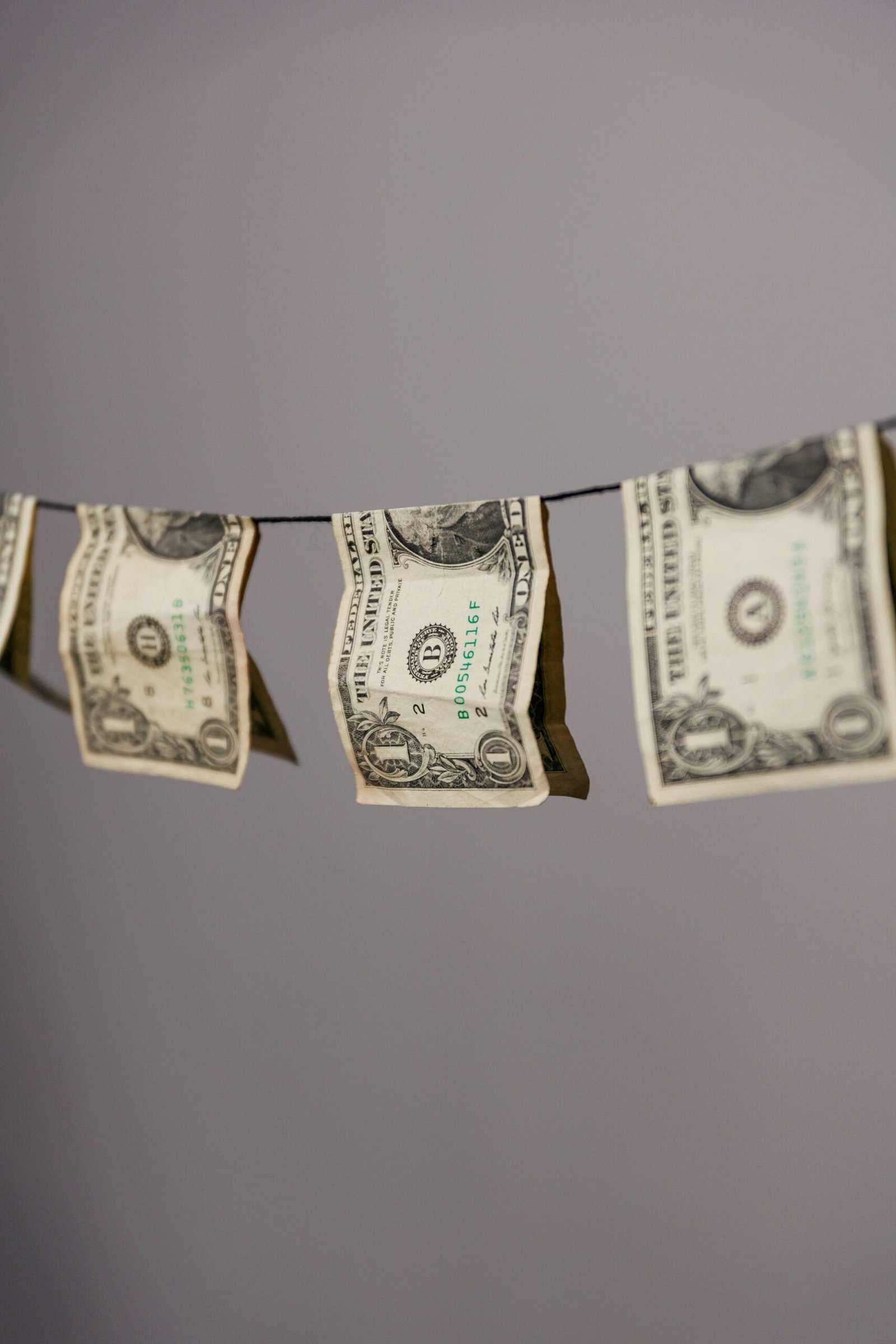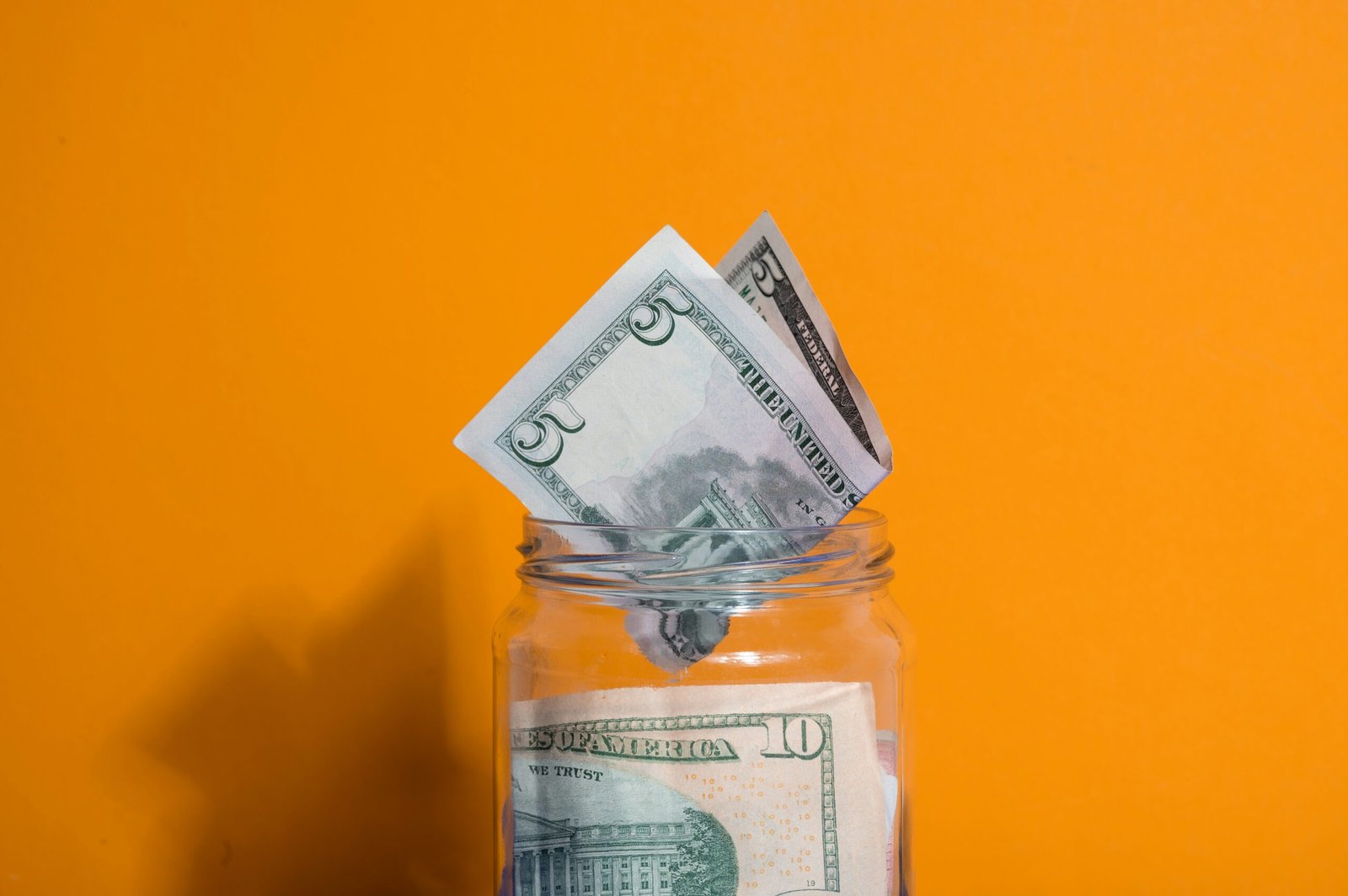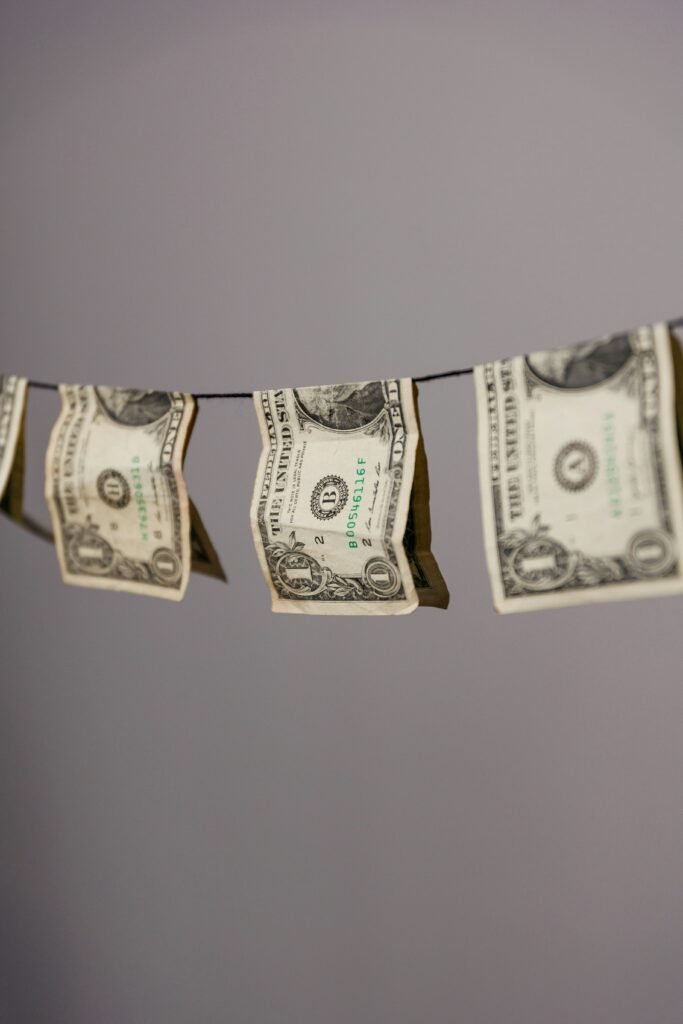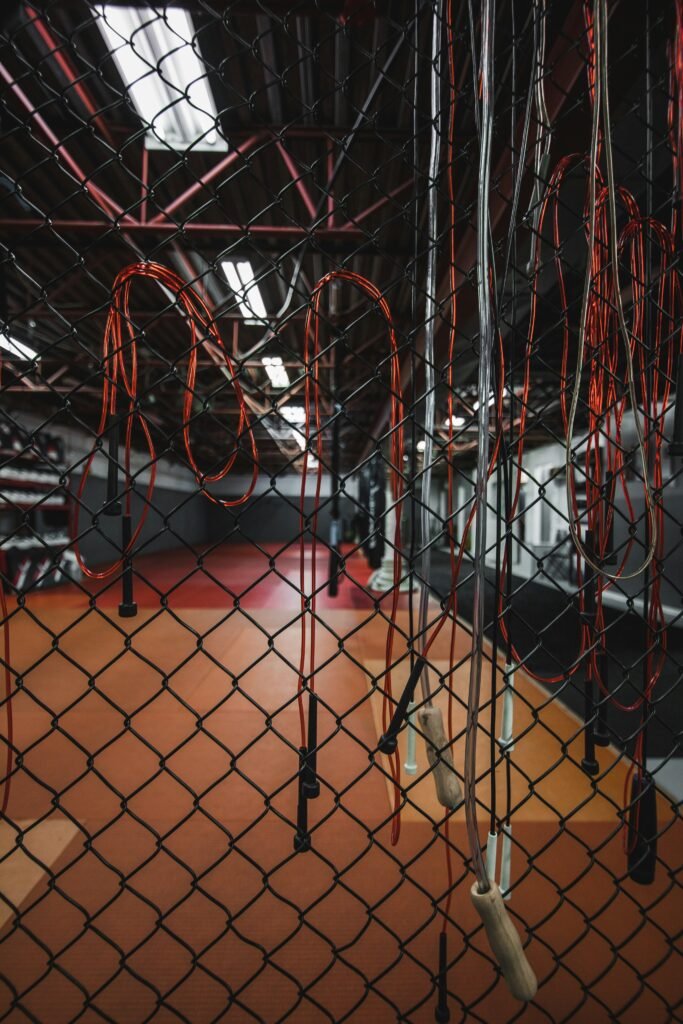Business & Money
Mastering Healthy Money Habits: Your Path to Financial Prosperity

In the journey towards financial prosperity, the role of habits cannot be underestimated. Your daily routines and behaviors shape your financial reality more than you might realize. Just as a small pebble creates ripples in a pond, your habits send ripples through your financial life. Embracing healthy money habits can be the turning point that propels you toward a brighter and more secure financial future.
The Significance of Healthy Money Habits: Building a Strong Foundation
Imagine your financial life as a house. The foundation on which it stands is built upon your habits. These habits are the invisible framework that determines whether your financial house stands tall or crumbles under pressure. Changing your habits is akin to strengthening that foundation – it might take effort and time, but the results are invaluable.
Mindful Spending Leads to Financial Freedom
The habit of mindful spending is a powerful tool. When you conscientiously track your expenses and set up a budget, you’re taking control of your money instead of letting it control you. This newfound awareness helps you eliminate wasteful spending and allocate resources to what truly matters. Over time, this habit can free up funds for savings and investments, bringing you closer to financial freedom.
Savings: The Stepping Stone to Security
Saving money isn’t just about stashing away a portion of your income. It’s about creating a safety net that cushions you against unforeseen challenges. By making saving a habit, you’re ensuring that you’re prepared for emergencies, able to seize opportunities and remain unshaken in the face of financial turbulence.
The Investment Habit: Growing Wealth, Step by Step
Investing is the heartbeat of wealth accumulation. By adopting the habit of regular, disciplined investing, you harness the power of compounding. This means your money grows over time, generating earnings on both the initial investment and the accumulated returns. This habit can potentially turn modest investments into substantial wealth in the long run.
Managing Debt: A Path to Financial Liberation
Healthy financial habits also extend to debt management. Consistently paying off high-interest debt and avoiding new debt can alleviate financial stress and free up funds for more meaningful pursuits. This habit contributes to a strong credit profile and positions you for better financial opportunities.
The Positive Outcomes of Healthy Habits: A Glimpse into the Future
When you consistently adopt healthy money habits, the rewards are abundant and enduring:
Reduced Stress, Enhanced Peace of Mind
A solid foundation of healthy financial habits minimizes money-related stress. You’ll sleep better at night knowing you’re in control of your financial destiny. This peace of mind is priceless.
Goal Achievement Becomes Attainable
Healthy habits provide the roadmap to achieving your financial goals. Whether it’s buying a home, funding your children’s education, or enjoying a comfortable retirement, consistent healthy habits are the vehicles that take you there.
Financial Independence and Wealth Building
Over time, healthy habits pave the way to financial independence. The habit of saving and investing translates into real wealth accumulation, offering you the freedom to live life on your own terms.
Setting a Positive Example
By embracing healthy financial habits, you’re setting a positive example for your loved ones. Your children, family members, and friends can learn from your journey, leading to a ripple effect of improved financial well-being.
In conclusion, transforming your financial future starts with transforming your habits. The significance of adopting healthy money habits cannot be overstated. These habits create a strong foundation, guiding you toward financial security, wealth accumulation, and peace of mind. By consistently nurturing these habits, you pave the way for a brighter and more prosperous financial tomorrow. Your financial house will stand strong, weathering storms and embracing opportunities with unwavering resilience.
Contact STATT Financial: info@stattfs.com
Business
Overqualified? Great, Now Prove You’ll Work for Free and Love It!

The phrase “Overqualified? Great, Now Prove You’ll Work for Free and Love It!” sums up the snake-eating-its-tail absurdity of the modern job search. In 2025, the most experienced, credentialed candidates are told they’re not quite the right fit—because they’re too capable, too seasoned, and might actually threaten the status quo by knowing what they’re worth.

The Experience Dilemma
Picture this: half the workforce has too much education or experience for the entry-level roles on offer, and yet, employers still claim they can’t find “qualified” people. The result? An absurd interview dance where applicants with years of achievement must convince employers they’re perfectly fine being underpaid and unappreciated. Many are even asked to perform hours of free “sample work”—projects that benefit the company but are never compensated.
Nearly half of job seekers have applied for jobs for which they were overqualified this year, and about a quarter feel “overqualification” is a major obstacle to actually getting hired. Employers call it “hiring for culture fit” or “salary alignment.” Candidates call it gaslighting: “We love your credentials, but wouldn’t someone like you get bored… or want a living wage?”.
Free Labor: The New Normal
The job hunt is now a marathon of unpaid labor. Applicants often rewrite resumes dozens of times (to game robotic filters), complete personality tests, and spend weeks in multi-stage interviews, only to be ghosted. In a perverse twist, talented workers jump through hoops for jobs explicitly beneath their skill level, all because employers believe an overqualified hire will “leave at the first better opportunity.” In reality, people just want to pay the bills—and would gladly contribute their value if someone gave them a chance.

Even as companies bemoan a “labor shortage,” they turn away the best and brightest, fearing they’ll disrupt the hierarchy, demand raises, or burn out from boredom. What’s left? The less skilled get trained on the job, and even they are told not to expect too much—after all, wouldn’t you do it for the “experience” alone?.
The Absurdity of the Market
Workers at every level—laid off, mid-career, executives—are hunting desperately for positions once reserved for recent graduates. Administrative jobs that previously required a high school diploma now routinely demand a college degree and relevant work history. Degree inflation means the bar keeps rising, but the pay and job security aren’t budging; 2025’s job search feels more like a dystopian obstacle course than a professional meritocracy.
Employers wield the “overqualified” label to maintain the illusion that they could hire anyone, while making sure they never have to pay what a role is really worth. Ironically, most companies spend more time filtering out talent than developing it—and everyone loses in the end.

What’s the Solution?
Job seekers are increasingly advised to do the following:
- Tailor resumes and cover letters to each application, emphasizing culture fit and signaling “no threat to the boss”.
- Network with insiders for referrals, since faceless applications are now nearly pointless.
- Accept that unpaid proof-of-skills work is now part of the game.
- Keep learning, but remember: adding skills may just make you even more overqualified for the next round.
The paradox of 2025? “Show us your value—just don’t expect to be treated like you have any.” The only thing more overqualified than today’s job seeker is the job market itself: packed with hurdles, full of empty promises, and rigged to keep the most talented quietly waiting for a call that may never come.
Business & Money
How the GENIUS Act Will Transform Your Money and Payments

The passage of the GENIUS Act in 2025 marks a revolutionary step in how money and payments will work in the United States. It is the first comprehensive federal law specifically regulating stablecoins—digital currencies pegged to traditional money like the U.S. dollar. This new legislation is poised to reshape your experience with money, making payments faster, more transparent, and potentially cheaper, while introducing clear consumer protections and regulatory standards for digital currencies.

What is the GENIUS Act?
The GENIUS Act stands for Guiding and Establishing National Innovation for U.S. Stablecoins. It establishes a clear legal framework for stablecoins, which are designed to hold a steady value (usually $1) unlike the more volatile cryptocurrencies such as Bitcoin. Stablecoins are increasingly used for routine transactions such as paying bills, sending remittances, or transferring money across borders.
Under the new law:
- Only authorized issuers like banks, credit unions, and federally approved non-bank financial institutions can issue stablecoins.
- Issuers must maintain 100% reserves—meaning for every digital coin issued, there must be a corresponding $1 held in cash, U.S. Treasury securities, or other approved liquid assets.
- Issuers are required to undergo regular audits and publish disclosures about their reserves.
- If an issuer fails or goes bankrupt, holders of stablecoins get priority in getting their money back ahead of other creditors.
This stringent reserve and audit requirement provides much-needed transparency and trust for consumers.
Key Consumer Benefits and Protections
- Faster, Cheaper Payments
Integrating stablecoins into mainstream banking systems can speed up transactions dramatically. You could receive paychecks instantly, send money overseas with minimal fees, and settle payments without the delays typical of current banking transfers. - Clear Regulation and Oversight
Before the GENIUS Act, the regulatory environment was fragmented and uncertain. Now, stablecoins have a federal framework that coordinates oversight between federal and state regulators to prevent fraud, money laundering, and abuses. - Privacy and Government Limits
The law bans the Federal Reserve from creating retail Central Bank Digital Currencies (CBDCs)—digital dollars controlled directly by the government—addressing privacy concerns about surveillance of everyday spending. - Financial Stability and Consumer Priority
The Act gives stablecoin holders priority status in bankruptcy cases, meaning your digital dollars are protected better than traditional bank deposits or bondholder claims in insolvencies.

What This Means for You
The GENIUS Act could significantly change your daily financial life:
- You may start to see stablecoins integrated within banking apps, payroll systems, and payment services.
- Money transfers could become almost instantaneous and cost less, especially across borders.
- More businesses and financial institutions might accept digital dollars pegged to the U.S. dollar.
- Consumer protections could increase, with more audit oversight and clarity about your rights as a stablecoin holder.
However, challenges remain. Regulators have up to 18 months to finalize detailed rules on audits, reserve management, fraud prevention, and compliance. The evolving regulations will determine how safe and seamless digital currency payments become.
A Global Race to Modernize Money
While the U.S. passed the GENIUS Act to catch up, other countries like China and members of the European Union are already piloting their own digital currencies. The legislation positions the U.S. to retain the dollar’s dominant role globally by tying digital currencies directly to U.S. dollars and Treasury securities, potentially boosting demand for American debt and keeping borrowing costs stable.
The Future of Money and Payments
The GENIUS Act opens the door to a more modern, efficient financial system where digital dollars coexist with traditional money, offering consumers faster options and better protections. While adoption will take time, this law lays the groundwork for a future where your payments, savings, and everyday money management are fundamentally transformed by technology—making financial services more accessible, transparent, and resilient.

Whether you choose to use stablecoins actively or not, the changes unfolding will reach into many aspects of how money moves in our economy. Staying informed about this evolving landscape will help you navigate the future of payments confidently.
Business
Paramount Seals $7.7B Deal for Exclusive UFC Streaming Rights

Paramount Global has secured the exclusive U.S. rights to the Ultimate Fighting Championship (UFC) in a groundbreaking deal worth $7.7 billion over seven years, beginning in 2026. This agreement marks a major shift in UFC’s distribution, moving away from the traditional pay-per-view model currently offered by ESPN to a new streaming-focused strategy centered on Paramount’s platform, Paramount+. All 43 annual UFC live events, including 13 major numbered events and 30 Fight Nights, will be available exclusively on Paramount+ at no additional cost to subscribers, with select marquee events also simulcast on the CBS broadcast network.

The deal comes just days after Paramount completed its merger with Skydance Media and represents the company’s first major sports rights acquisition under its new leadership. Paramount CEO David Ellison emphasized the uniqueness of partnering exclusively with a global sports powerhouse like UFC, highlighting the move as a key part of Paramount’s strategy to enhance viewer engagement and grow its streaming subscriber base.
For UFC, the deal ends the pay-per-view model common in the sport, greatly increasing accessibility for fans and potentially expanding the sport’s U.S. audience. The contract also doubles the yearly average payment compared to the $550 million ESPN currently pays, reflecting the growing value and popularity of UFC content.
TKO Group Holdings, UFC’s parent company, sees this agreement as a milestone in their decade-long growth, with TKO’s CEO Ari Emanuel affirming trust in Paramount’s vision to leverage technology to improve storytelling and the viewing experience.
This landmark deal reflects the rapidly evolving sports media landscape, with streaming services increasingly vying for premium content to attract and retain subscribers. Paramount’s move to bring UFC to its platform exclusively is a strong statement of commitment to live sports as a vital driver of engagement in the streaming age.
Key Points:
- Paramount secured UFC U.S. media rights for $7.7 billion over 7 years, starting 2026.
- UFC events will be exclusively streamed on Paramount+, ending ESPN’s pay-per-view model.
- The deal includes 13 major numbered events and 30 Fight Nights annually.
- Some marquee events will also air on CBS broadcast TV.
- The yearly payment doubles ESPN’s previous contract.
- The deal was announced shortly after Paramount’s merger with Skydance.
- Paramount aims to use UFC to boost Paramount+ subscriber growth and engagement.
- TKO Group (UFC parent company) supports the deal and foresees enhanced tech-enabled storytelling.
- Streaming services continue to disrupt traditional sports broadcasting models.

 Business3 weeks ago
Business3 weeks agoDisney Loses $3.87 Billion as Subscription Cancellations Surge After Kimmel Suspension

 Entertainment3 weeks ago
Entertainment3 weeks agoWhat the Deletion Frenzy Reveals in the David and Celeste Tragedy

 Filmmaking4 weeks ago
Filmmaking4 weeks agoThe Real Reasons Film Jobs Are Disappearing

 Film Industry4 weeks ago
Film Industry4 weeks agoInside “Sanctuary”: Ian Courter on Military Comedy’s Human Side

 Entertainment4 weeks ago
Entertainment4 weeks agoABC Suspends ‘Jimmy Kimmel Live!’ Indefinitely After Kirk Remarks

 Tech4 weeks ago
Tech4 weeks agoWhy Experts Say AI Could Manipulate, Blackmail, and Even Replace Human Relationships

 News4 weeks ago
News4 weeks agoSeeing Trauma: What Charlie Kirk’s Death Reveals About a Nation in Conflict

 Entertainment3 weeks ago
Entertainment3 weeks agoExecutive Producer Debut: How Celia Carver Created Festival Hit ‘Afterparty’







































